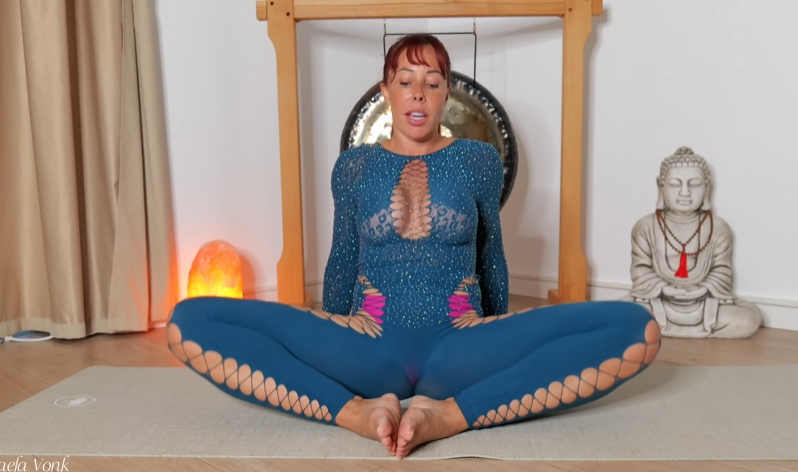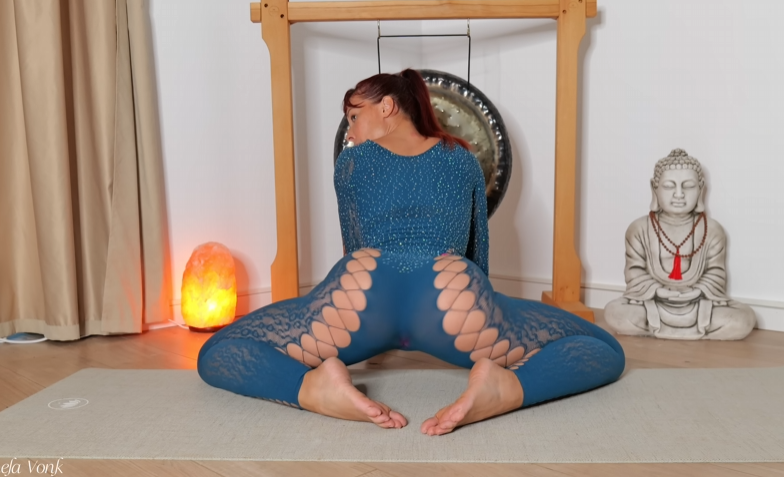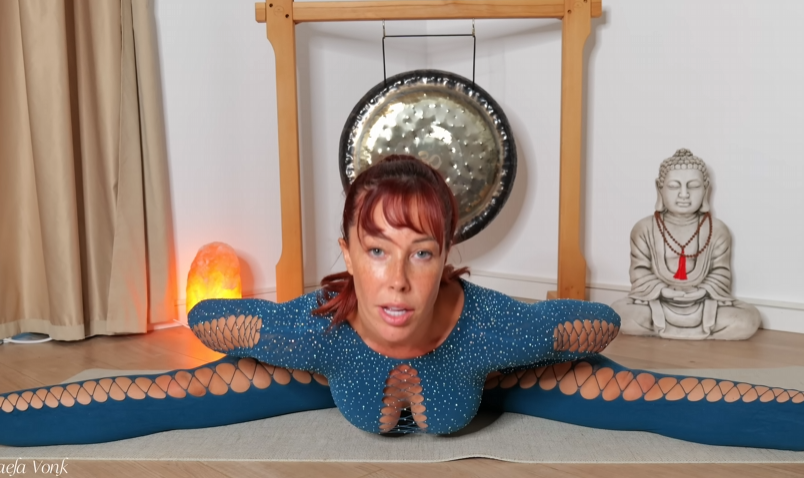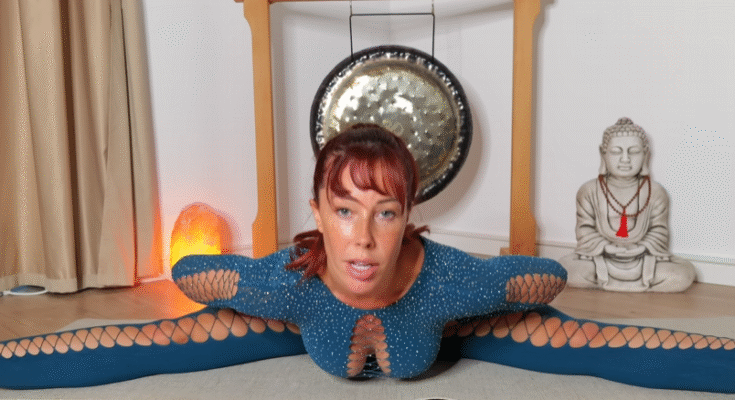
In our busy, stress-filled lives, we often forget the importance of releasing tension—both physical and emotional. This [4K YOGA] Yoga Flow for an Intense Build up and Release is designed to guide you through a powerful journey: from grounding and heating the body to an intense peak, and finally to a soft, deep release. Whether you’re seeking a strong workout, an emotional detox, or simply a mental reset, this flow will leave you feeling light, open, and balanced.
The Intention: Strength, Sweat, and Surrender
This yoga flow isn’t just about flexibility or holding poses. It’s about engaging the body, breathing through challenge, and giving yourself permission to let go. The first part of the practice builds heat in your core, legs, and arms—awakening your body and focus. The second part leads you into deep stretches and restorative poses that invite full-body relaxation and emotional release.
Shot in stunning 4K resolution, this practice allows every detail—every breath, every movement—to feel immersive and real. Whether you’re practicing in your living room or a studio, you’ll feel like you’re right there, flowing with a teacher who truly guides you through every inhale and exhale.
Part 1: Grounding and Awakening (0:00–10:00)
Start in Child’s Pose, letting your forehead rest on the mat. Take deep belly breaths and begin to mentally arrive. Set an intention: “I allow myself to build, burn, and release.”
Move into Cat-Cow Flow to wake up your spine. Link each movement with breath. Inhale: arch. Exhale: round. Do this slowly for about 2 minutes.
Then transition into Downward Facing Dog, peddling out the feet and stretching through the calves and hamstrings. This is the first sign of heat—notice how your muscles begin to engage.
Walk your feet forward and come into a Standing Forward Fold. Let gravity do the work. Sway side to side if it feels right.
On an inhale, sweep your arms up into Mountain Pose, grounding through your feet and reaching high with energy.

Part 2: The Build-Up (10:00–30:00)
This is where the intensity begins to rise. Prepare to sweat and challenge yourself.
Start with several rounds of Sun Salutation A, gradually moving faster as you become warmer. Focus on strong, fluid transitions and steady breath.
Then move into Sun Salutation B, incorporating Chair Pose and Warrior I. Engage your legs, draw the belly in, and begin to feel the power of your breath controlling your body.
Next, build into a Warrior Flow Sequence:
- Warrior II
- Reverse Warrior
- Side Angle Pose
- Half Moon Pose
Hold each pose for 3–5 breaths, then smoothly transition. Repeat on both sides. This sequence builds strength in the legs, glutes, and shoulders.
From here, come into a Plank Pose. Hold for 30 seconds. Then lower into Chaturanga, rise into Upward Dog, and push back into Downward Dog.
Now it’s time for a Core Blast:
- Boat Pose (Navasana) – 3 rounds, holding for 30 seconds
- Forearm Plank – 1 minute
- Bicycle Twists – 20 reps per side
Your heart should be pumping, sweat dripping. Keep breathing. You’re building energy to later release.

Part 3: The Peak and the Release (30:00–50:00)
Move into Crescent Lunge, then transition into Twisted Crescent Lunge. Let your breath support the deeper twist. Feel the detoxifying effect.
Next, flow into Chair Pose Twist, holding each side. Then rise up and prepare for Eagle Pose. This standing balance builds deep concentration.
After Eagle, go into Standing Splits and then lower into Lizard Pose. Now the release truly begins.
Hold Lizard Pose for up to 2 minutes per side, allowing your hips to melt open. If emotion arises, let it. This pose stores a lot of energy.
From here, move into Pigeon Pose. Let your upper body relax fully over your front leg. Breathe deeply. The tension built earlier is now ready to exit.
Slowly transition onto your back for Bridge Pose or Wheel Pose. This heart-opening posture is your final peak before surrender.
Hold Bridge/Wheel for up to 1 minute. Then gently come down.

Part 4: Deep Surrender (50:00–60:00)
Now it’s time to let go. Slowly lower into Supta Baddha Konasana (Reclining Bound Angle Pose). Place your hands over your belly and heart. Notice your breath. Notice the release.
Next, take a gentle Spinal Twist on both sides. Close your eyes and allow gravity to take over.
Then move into Happy Baby Pose, gently rocking side to side. You might even feel a smile spread on your face as your body thanks you.
Finally, come into Savasana. This is the most important part. Let your body absorb the practice. Let go of all control. Stay here for 5–10 minutes.
Why This Flow Works
This flow is designed to mimic the natural rhythm of life: build-up, intensity, and eventual release. In yoga, this is a tapas-to-surrender cycle. We create inner heat to burn away what doesn’t serve us and soften into a renewed, clear state.
Many people store stress in their hips, shoulders, and jaw. This flow targets those areas with both strength and stretch. Emotionally, it helps release frustration, anxiety, and overwhelm through intense effort followed by deep letting go.
And with 4K high-definition visuals, the immersive experience adds to the emotional and physical transformation. You see every movement with clarity and precision. It’s like practicing with your teacher in the room.

Final Words
This [4K YOGA] Yoga Flow for an Intense Build up and Release isn’t just a workout. It’s a journey.
Each pose, each breath, each drop of sweat brings you closer to your center. When you reach the final moments of the practice, your body will feel lighter, your heart more open, and your mind clearer.
You’ve built. You’ve burned. You’ve released.
Now, carry that lightness with you—off the mat and into the rest of your day.
Namaste.



